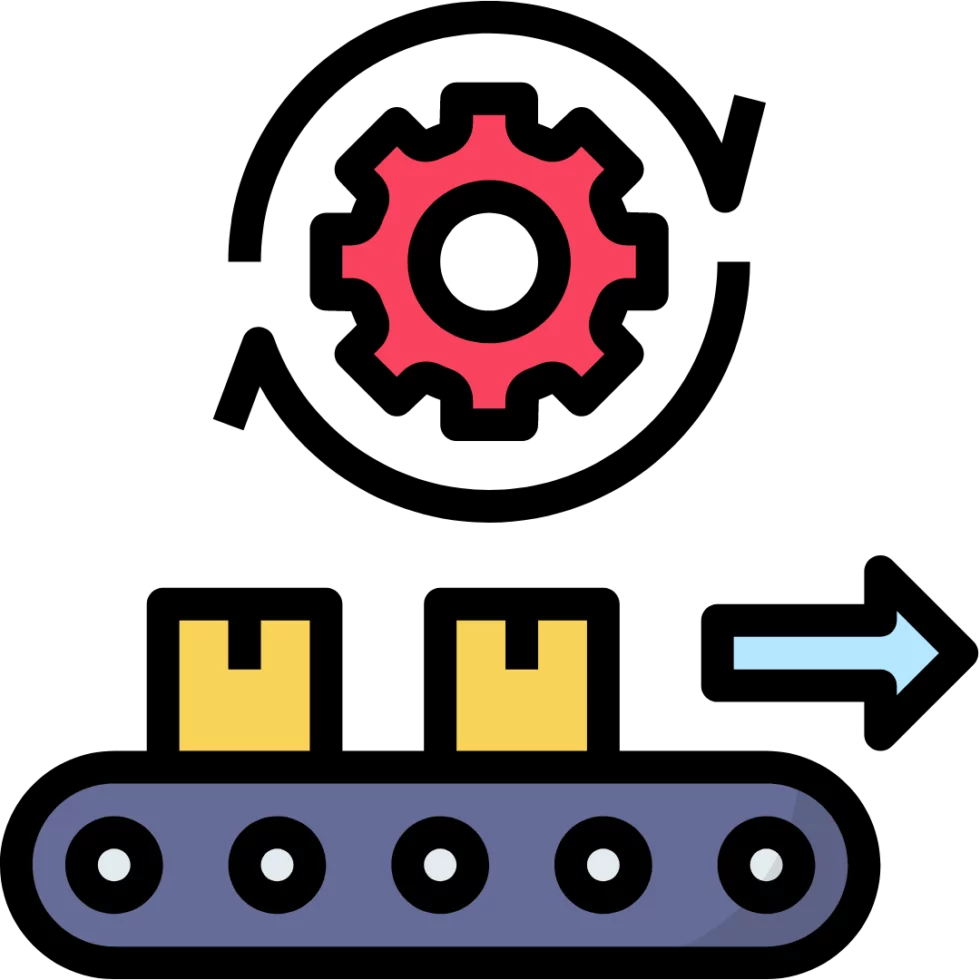Hiring a Virtual Assistant
Jump to another section:
HIRING A VIRTUAL ASSISTANT
When to hire a Virtual Assistant?
If you’re looking to hire your first (or second, or fifth) virtual assistant, it’s likely because you’re in a bit of a predicament. The good news is you got your business off the ground and it’s been growing. The bad news is you’re now working very near or at capacity. Therefore, you can’t grow any further because you’re out of time for attracting new clients much less working with them. You may find yourself working longer and longer hours to meet the demand and/or you may fall behind in routine tasks within your business.
In short, you’ve reached what Charlie Gilkey’s calls “the crucible.” This is stage 3 in his model of the life cycle of a small business where entrepreneurs find themselves, “at the delightfully frustrating point at which they’re booked solid and working at full steam, but the demand for their goods and services outstrips their ability to meet it. Something has to give, but entrepreneurs often don’t want to let go of the business activities that have gotten them to this stage.”
If you want to continue to grow your business – and keep your sanity in the process – it’s essential to let go of the idea that you have to do everything in your business. In fact, not only do you not have to do everything in your business, you shouldn’t do everything in your business.
We’re going to explain why in more detail below, but first let’s take a look at some of the telltale signs that it’s time to hire a virtual assistant.

To accelerate their growth, business owners should hire a VA when they begin struggling to focus on strategy, clients, sales, and content creation. The likely cause of their struggle is too much time tied up in routine administrative, marketing, and financial tasks. Hiring a VA to manage those day-to-day tasks frees the owner up to work on revenue- generating business activities.
Hire a Virtual Assistant Before You're Too Swamped
Ideally, a business owner recognizes they’re approaching capacity before they’re buried in their business. This allows them to take time to track where they spend their time, document how they perform routine tasks, and determine which they are willing and able to delegate. (In the next section, we’ll walk you through how to go through that process for yourself and identify what you should stop doing and delegate to someone else.)
If you’re in this position, a gut check is probably all that you need to recognize that something’s gotta give. But just in case you need a little validation, here are some of the signs that it’s time for you to hire a VA.
- You’re spending most of your time – or simply more than you’d like to – on routine administrative tasks.
- You’re out of control – you’re missing deadlines and tasks are falling through the cracks.
- You’re turning work away.
- You’re working all the time just to keep up.
- Your family is complaining they never see you.
- You have big ideas you have no time to implement.
- You’re super stressed and it’s taking a toll on your health.
- Your business use to excite you, but now it bums you out.
- You’re not spending enough time in your zone of genius.
And speaking of your zone of genius, let’s take a look at how it relates to when you should hire a virtual assistant and how to calculate exactly what your zone of genius is worth in your business.
If you are going to grow a business, what you are going to need is someone to help you with the delivery and servicing of the clients.
Anfernee Chansamooth, Simple Creative Marketing Chief Marketing Officer

Hire a Virtual Assistant Before You Think You're "Ready"
In the Charlie Gilkey quote above, he notes that many entrepreneurs don’t feel ready to give up some of the tasks that have brought them to this stage in their business. They think they must keep doing what they’ve been doing in order to continue to achieve success. Chris Ducker also refers to this as “Superhero Syndrome,” and notes that it leads to burnout and that the solution is to learn to delegate.
Find Out What You Need to Stop Doing
One of the reasons you don’t feel ready is simply because you have neither examined the value of your time nor defined your “genius tasks.” In his book The Stop Doing List, Matt Malouf defines genius tasks as, “a task that has great financial return, that you love to do, and that you are really good at.” According to Malouf, genius tasks usually fall under sales, marketing, team management, product or service delivery, and system development.
In the chapter titled, “Your Time Is Worth Money!” he states:

Along the way, as we became business owners, many of us lost track of knowing the value of our time. We started looking at the list of tasks we had to complete, rather than understanding what tasks or roles were essential to complete to maximise our hourly return as the business owner. Often we sacrifice our time on tasks that, however necessary they are, add nothing to the bottom line. We start treating all tasks as equal and, instead of guarding our time as our most precious commodity and carefully choosing where we will spend it, we waste it.
Calculate What Your Time Is Worth
Malouf also offers a simple formula for calculating what your time is really worth, which you can use as a yardstick for assessing your activities. Calculate your hourly rate by dividing your annual income goal first by the number of weeks you want to work each year, then by the number of hours a week you intend to work. Once you calculate your rate, you use it to decide whether you’re getting a positive return on investment on the tasks you’re completing.
Get Ready to Automate and Delegate
To find out what belongs on your stop doing list, perform the 2-week time tracking activity described in the next section. Compare the tasks you’re completing, along with the amount of time they take, to your hourly rate. Anything that falls outside of your genius tasks and is worth less than your hourly rate should be automated or delegated to someone else.

So, if you feel that you’d like to hire a virtual assistant, but you’re not quite ready, that’s actually a sign to let you know that you need to get ready and figure out what you should stop doing! If you don’t, you’re going to find yourself working longer and longer hours, performing low impact tasks just to keep up with the business and hindering your ability to grow your business.
To learn more about what you should stop doing, tune into The Virtual Hub’s three-part podcast series with Matt Malouf himself. In the series, he first addresses the mindset you need to develop to stop doing and delegate, then how to create your stop doing list and step into your genius zone, and finally how to effectively stop doing and delegate.
Hire a Virtual Assistant after You've Automated What You Can
We 100% believe that hiring a virtual assistant can be the first step toward growing and scaling your business, which will impact not only your own business and life, but it will also ripple out and create massive benefits to your local and the global economy. However, it does not make sense to hire a VA, which will cost you hundreds of dollars a month, if you haven’t first invested in automation tools for processes. Many of these tools are free (or at least have a free version that may meet your current needs or include a low-cost monthly fee.
Examples of Automation Tools
For example, Dubsado is a popular all-in-one CRM and process management tool which is popular among freelancers and other entrepreneurs. The tool can manage your leads and workflows by automating routine communication emails, invoicing and more. And the subscription will cost you just $35 a month or less, depending upon the payment plan you select.
Another app for productivity and process automation is Zapier, which can connect tasks and actions among hundreds of software tools. Zapier passes information between apps to create workflows known as “Zaps” and can automate steps in processes related to email newsletters, project management, and customer support, among many others. If you want to learn more about the kinds of things Zapier allows you to automate, they have compiled a list of over 300 popular Zaps – but the possibilities are literally almost limitless. The free level of Zapier allows you to have five active Zaps at a time and will perform 100 tasks a month via those Zaps, and the premium options start at roughly $20 each month.
If you are interested in learning more about automation, but you aren’t even sure where you might apply automation within your business, Business 2 Community covers why an automation strategy is essential and lists business functions where you can put it to use in your business.

Hire a Virtual Assistant as Soon as You Know Exactly What They'll Do
Although we’re recommending that you hire a VA before you feel ready, you mustn’t hire a virtual assistant before you’ve gotten your business ready to hand things off. That is, don’t hire a VA until you’ve invested the time to:
- Figure out exactly what tasks they will perform.
- Determine how they’ll carry out those tasks.
- Develop a plan for training them to perform the tasks, as well as a system for communicating and monitoring work.
The upcoming sections cover how to identify tasks, how to create processes for the tasks, and how to communicate with and manage your virtual team members.
Hire a Virtual Assistant When You Need to Add Skills
This reason for hiring a VA is often overlooked. If you do the ‘stop doing’ activities and separate your genius tasks from everything else, these tasks will likely end up on your stop doing list. However, some tasks could fall into a gray area, where they are important to your bottom line, you like doing them, and you’re good at them, but they’d be better executed by someone else. Here are two scenarios where you may want to hire a virtual assistant – or someone else – to help you fill some gaps in your skills.
You Need Complementary Skills
As you go through this process of separating your genius and stop doing tasks, you may uncover areas where you need to find someone who’s better at it than you are. For example, maybe you have “scheduling social media content” on your stop doing list – which is a great one for and easy to hand off to a VA. But when you think about it a little further, you realize you’re good at coming up with content ideas, but you’re either not great writing them or you simply hate writing. Therefore, you decide that “creating social media content” also goes on your stop doing list.
Then, when it comes time to find your ideal virtual assistant, you’ll search for a content management or social media VA with some writing chops. Writing social posts becomes one more task you eliminate from your to-do list, and the content improves at the same time!
You’re Better at Vision and Strategy than Task Execution
For many business owners, especially those in more creative industries, coming up with ideas is easy but breaking down and following through on those ideas is difficult. Often, the entrepreneur is an entrepreneur because of their visionary nature. They can see the big picture and how to reach their goals strategically, but they struggle with creating the day-to-day tactics needed to execute the vision.
Although a visionary entrepreneur may also hire an online business/chapter manager or an integrator (both of which were described in the “What is a Virtual Assistant” section) to help them create and execute their business systems, a virtual assistant can also help. VAs are taskmasters! When you hand off all your routine, repeatable tasks to a virtual assistant, it keeps your business moving forward and frees you up to invest more in your strategic vision.
Hire a Virtual Assistant as an Investment in Your Business
We hope by now you can see that hiring a virtual assistant pays you dividends because it allows you to spend more time in your genius zone – and your genius zone is your money-making zone. But the idea of spending money on a VA – versus “saving” money by continuing to do everything yourself – trips up a lot of business owners, so we want to spend more time on it.
Businesses stall out when the owner is being pulled in a million directions, trying to learn and do everything in the business. But entrepreneurs with businesses that are growing quickly and consistently know that building a team around them means they’re buying back the time they need to perform the activities that grow the business. By leveraging someone else’s skills, you give yourself the time you need to focus on what’s most important in your business.
An Everyday Example
Would you rather change the oil in your car yourself or spend $30-50 at the service station where they’ll take care of it in roughly 20 minutes? Most people take their cars to the service station, even though changing your oil is something car owners could do themselves for less money. Why is that?
Well, for one, it’s likely to take you up to twice as long to do it yourself – and that’s not counting the time it will take you to learn the process the first time you do it.
Plus, you still have to run out to the auto supply store to purchase the oil and a filter, as well as properly dispose of the old oil. Finally, unless cars are your thing, you’re probably just not interested in learning car maintenance, or maybe you just hate to get dirty or greasy. Therefore, the time and energy you save by going to the auto shop is worth the cost of the professional oil change.
The time and energy you’re going to save by investing in a virtual assistant is also well worth the investment. But you don’t have to go on our word for it, as you’ve created a means to measure your investment.

Expense or Investment: It’s All in the Mindset
Our CEO Barbara Turley and the aforementioned Matt Malouf dig into this mindset issue in the first episode of that three-part podcast series on the “stop doing” concepts. They discuss how most business owners initially see the cost of a virtual assistant as an expense. (Or they put off hiring a virtual assistant to avoid the new “expense.”) And initially, it is an expense because you have to invest the time to prepare for, train, and manage the new VA. But in the long run, adding virtual assistants to your team pays bigger dividends than anything else you can invest in.
If you’re ready to stop being the administrator of your company and start being its leader and you’re looking to start scaling your business, hiring a virtual assistant is the best first step you can take!
What to Do Before Hiring A Virtual
Assistant

After careful consideration, you’ve decided that now is the time to hire a VA. Great! But before you eagerly jump right into your search, get crystal clear on what you’re looking for first. As we described in the section about what virtual assistants do, there is no “one size fits all” VA out there. That is, don’t forget to ditch the myth of the super VA. There’s no magical person who can meet all the possible needs that virtual assistants can fill. Therefore, you need to know exactly what tasks you’ll delegate, and the skills needed to carry them out.
Determine What to Delegate to the Virtual Assistant
It seems obvious that business owners would want to know what they’ll have a VA to do – what they’ll be paying the VA for – before they bring someone aboard. However, it’s common for business owners to find themselves in such desperate need of help that they fail to “look before they leap.” Many hire a VA before they have clarity around the tasks the VA will perform, which ends up in disaster for both parties. Here’s how to avoid that trap.
Conduct a Time Audit
It seems obvious that business owners would want to know what they’ll have a VA to do – what they’ll be paying the VA for – before they bring someone aboard. However, it’s common for business owners to find themselves in such desperate need of help that they fail to “look before they leap.” Many hire a VA before they have clarity around the tasks the VA will perform, which ends up in disaster for both parties. Here’s how to avoid that trap.

Take a look back at the When to Hire a Virtual Assistant section for more detail about a 2-week time audit for taking a look at everything you are doing in your business and identifying what you need to stop doing – and delegate to an automation or team member – to move your business forward.
How you document your activities is up to you. You could simply jot down in your calendar what you’re doing throughout the day, create a spreadsheet, or even just keep a separate notebook handy. Setting some reminders for yourself throughout the day to ensure you’re tracking activities is probably a good idea. Most business owners tend to get wrapped up in what they’re doing, so it’s all too easy to forget to record your tasks until it’s too late to remember the details. Time tracking apps like RescueTime and other time tracking extensions can also help you to paint an accurate picture of where your time is going.
Chris Ducker also suggests an activity you might want to try. You create “3 lists to freedom” to help you figure out how best to outsource activities. Listing activities you hate to do, tasks you struggle with (i.e., you don’t have the skills), and anything you don’t think you should be doing helps you discern what to delegate and the skills you need in a virtual assistant.
Divide Your Tasks
Next, once you have your two-weeks’ worth of observations, review what you’ve recorded. Try grouping and tallying your time by type of task. First, drop them into categories like admin, sales, marketing, and operations. Next, take a look at where you’re spending your time and ask which tasks are and are not the best use of your time.
What you’re aiming for is separate the tasks that fall into your (or your existing team member’s) “sweet spot” or “genius tasks” – those things that you’re great at and that you love to do – from everything else. Your sweet spot tasks are the more strategic activities – those that make you money and otherwise move your business forward. Sweet spot activities are the ones that must be done by you. They are likely the tasks closely related to why you created your business in the first place.
Determine which tasks to delegate
Obviously, you’re not handing off your sweet spot tasks, so now you’ll look at everything else and determine what can be done by someone else. The simplest things to hand over to a virtual assistant are all the routine, repetitive tasks that need to be done but take up a lot of time yet don’t add a ton of value. However, you don’t have to limit yourself to simple, daily and weekly tasks. Just look for anything that – with proper direction – someone other than you could do.
Finally, take all the items and sort them into lists of daily, weekly, monthly, and quarterly tasks. Focus on getting the list of daily, repeatable tasks nailed down first. Trust us! Once you hire your VA, plan to use this list as the first items you assign to him or her. For one, it will take a bunch of low-level tasks off your daily to-do list, freeing up a ton of time and energy. Also, those daily, repeatable tasks will be among the easiest ones your virtual assistant to learn quickly. When your VA starts, the two of you will be able to hit the ground running!

Consider Whether Specialist Skills Are Needed
When you go through your lists, you are likely going to identify simple, repeatable tasks that are perfect for delegating to a generalist virtual assistant. However, you may also find that some tasks on your “stop doing” list require more specialist skills. For example, if you have been updating your website because, although it’s something you can do, it’s an activity you hate doing and aren’t highly skilled at, you are going to either need to outsource your website work to a specialist virtual assistant or to a web designer, depending upon the complexity of the updates your site requires.
Don’t fall into the trap of the “super VA” myth mentioned above. Be realistic about what you can assign to a VA and what is going to require special skills from another team member of contractor. The question of whether you need a VA and/or to fill a different role is a topic that’s been addressed on The Virtual Success Show in greater detail.
Create Processes and Standard Operating Procedures (SOPs)
Once you know what you’ll have your virtual assistant do, you need to establish how they’re going to do it. That is, you need to establish process clarity.
Process clarity ensures clear expectations are set – that everyone on the team understands the desired outcome of a given task, the steps required to perform it effectively, and who is responsible for what. To achieve process clarity with your virtual assistant (and other team members), we recommend focusing on three elements: process mapping, process efficiency and effectiveness, and process ownership. If that sounds like a bit much, we promise that getting to process clarity will pay huge dividends for your business in the long run. So, the effort you put into getting this right now will be well worth it. Plus, we’re about to explain to you exactly how to do it!
Process Mapping
First off, let’s talk about why process mapping is incredibly important for your business in general – and not just in relation to hiring a virtual assistant. For starters, you cannot grow a great business without solid systems. You can create a good business without systems and probably earn a nice income. But a great business is one that works for you and not vice versa.
Also, without solid, repeatable processes, you will find it virtually impossible – and honestly exhausting and totally overwhelming – to take your business to the next level. “Leveling up” your business requires sound systems and processes that are working for you, plus a good team to manage them. But the systems and processes must come before the team, and process mapping is the first key to developing effective processes.
How To Map Your Processes
Okay, so we hope we’ve convinced you that investing the time to gain process clarity is critical and you’re ready to jump in and get started. Now, this might seem a bit dull and tedious but trust us – it pays huge, long-term dividends.
Clarify Why You Have These Processes
To Get Started, We First Ask A Question That Might Sound Silly At First Glance: “Why Are We Actually Doing This Process?” But You Really Have To Ask This Question At The Beginning Of This Whole Step.
Next, take a look at the tasks you laid out in when you completed your time audit and identified the tasks you’ll be handing off. For each, quickly jot down why you’re actually performing that task for your business. Here are some additional prompts to help you really drill down into that why:
- Why are we doing this task?
- What is the purpose of this task?
- Why are we even bothering with this task?
And what you’re really looking for here is what is the result that you’re looking for. Clarify:
- Why this task is important to my business?
- What is the outcome that we want to achieve from this task?
- What’s the objective?
- What results do we expect from this task?
Once you’re clear on the why and the outcome, the next two questions become:
- Do we already have a process?
- Is this process actually inside my head?
We bet you’re going to be a bit surprised that most of the time, there is a process but it only exists in your head. Often, business owners don’t even realize they have a process, because they’ve never thought about it. However, you probably have a way that you do things – steps in a process and standards for the outcome. And if you don’t have a standard process and criteria for the outcome of some or your tasks, let’s fix that now.
Identify The Steps In The Process
For each task, you’ll document the process, step by step. Now, this next point can’t be emphasized enough. You have to be unbelievably, super-granular here, capturing more details than you think you need. No matter how obvious a step may appear to be, write it down. Break it down into the smallest elements you can. This super-detailed documentation is needed to ensure your process could be handed to anyone who doesn’t know you and doesn’t know your business, yet they could execute the task based on the details in the steps.
That is the definition of a great process and having a great process allows you to hand it to someone. A super-clear, step-by-step task can be delegated. You hand it off to someone else, and you don’t have to worry about it! When you’re able to hand a process off to your virtual assistant, know that they’ll be able to follow the steps, stop thinking about it – because you know it will be handled – that is the foolproof, stress-free place you want to be in your business.
Don’t misunderstand. Problems will occur, especially in the beginning. We’ll talk about dealing with problems and mistakes later and explain how we view those problems that come up as a gift, rather than anything else. For now, know that following the steps in the process usually works. And when they don’t, it’s a signal.
Document the Process Steps
Now that you’ve identified the steps, you need to document the process using clear, simple language. Start by giving a description of the process, the explanation of why you do it, and then lay out how you do it.
To help keep it simple, clear, and direct, use bullet points and completely avoid big, long-winded paragraphs. Use simple, to-the-point, very granular, detailed bullet points. To clarify what we mean by detailed, we don’t mean long, detail-filled bullet points, we mean lots of bullet points. Add a bullet point for each individual mini step within the process. Create as many as you need to communicate every step clearly.
Clarify Who Is Responsible for the Process
This next step in process mapping seems obvious, but it’s critical to be clear about who is responsible for this process. Again, this might seem so obvious, but we often see business owners create problems for themselves because of lack of clarity here. For example, imagine you’re going to be out of the office for a while and you email two members of your team to tell them what to do while you’re gone. You send something along the lines of, “I would like to do X, Y and Z on social media while I’m away. If you could take care of that that would be great.”
What’s the problem? There’s no clear line to indicate which individual was leading on that, which was going to step in and actually perform the tasks and so on. In situations like that, you fall into the trap where each person thinks the other is handling things, and then no one is! Therefore, you must be very clear, who is responsible for this task. Is it you, or is it the VA, or is it somebody else?
Additional Process Mapping Decisions
- How often do we do the task? Is it daily, weekly, monthly? Specify it. If you want something to be done every single week without fail, non-negotiable, no excuses, then put it into your recurring tasks list to repeat weekly.
- How quickly do we do the task? Be very clear on turnaround times and due dates. If it happens weekly and needs to be completed by end-of-day each Wednesday, spell that out. At the same time, make sure you are fully aware of how long things take, especially those that are outside of your expertise!
- What tools and resources are used for this process? You may have opportunities to allow our virtual assistant to identify where there’s a better tool for them to use. But for now, when you have the tools and resources that you like to use, spell it out in your process.
- What are the standards for the process? That is, how does the VA know when it’s a good job? Another caveat here. Often business owners have a standard that only exists in their heads and they don’t realize this. Then, when they get a task back that looks substandard for them, they get very upset. But you need to communicate what is success for you and what is a job well done for you. Describe exactly what that looks like. This is also something you should discuss with your Vas – that they also need to ask and verify with you what success looks like, but we’ll talk more about that in the section on communicating with your virtual assistant.
Process Efficiency and Effectiveness
We want you to design your processes to be as efficient and effective as possible. Because if you give an inefficient or an ineffective process to somebody else, you’re basically throwing your money away. You’ll pay someone to do it, but you haven’t set them up to do it successfully. You don’t want to pay a virtual assistant to perform a task incorrectly or inefficiently, right?
What’s more, we often find that the business owner is likely to blame the VA when it doesn’t go right. Then people feel blamed for things outside of their control and everyone gets upset. Yet what’s actually going wrong is the process – the process itself is the problem.
So, to reiterate from above, your process must be something where anyone could come in, pick it up, follow the correct steps, and succeed. If this can’t be done, you need to examine the process itself for problems.
Performing this troubleshooting is critical and you need to do it and to do now. For example, some processes really rely heavily on your experience or your judgment and your opinion because you’ve been doing it yourself. It sometimes can be unclear for somebody new coming in, so make sure you consider all of your thought processes that go into a task, and not just the visible steps.
Process Ownership
Now we’re moving on to step three in process clarity, which is the ownership of the process. You have likely noticed that the bulk of this section has very little to do with the virtual assistant you intend to add to your team. This section has been all to do with you, your business, and the processes for the things you’re doing. And why is that? Because this is your business and you have to control the processes for how things are done. Your virtual assistant may arrive thoroughly trained in digital marketing, social media concepts, or whatever it is you’re looking for. However, content, context, look and feel, process outcomes, and the strategy the tasks derive from are all your job in your business.
That is, you want your voice and your stamp on everything that comes through your business…from emails to clients, right through to how the phone is answered, to how a social media post gets pushed out, and the types of pictures that represent your brand, and everything else. Those are all your unique stamp, which you need to have on all those things. Therefore, you are responsible for creating and documenting the processes that will lead to success for you, your virtual assistant (and other team members), and your business.
In the upcoming section on managing virtual assistants, we dig deep into rules and best practices for delegation and process ownership and oversight in greater detail. For now, just know that, as the business owner, you must take ownership of your processes, and in the sections to come, we will tell you how to do that effectively.
Select a Project Management Tool
It’s highly recommended that you select a project management system before you bring your virtual assistant on board. Choosing the right project management software will be critical to your success, as it’s the best means for delegating and managing your team’s work.
What is a Project Management Tool?
A project management tool allows you and your team to organize work and manage tasks and projects. Typically, project management tools include the ability to plan, schedule, and delegate work. They also allow you to communicate and collaborate with others, document progress, and track and evaluate productivity.
Within a project management system, you create projects, composed of tasks and subtasks. Individual projects or tasks can include templates, checklists, and other resources, such as documents, spreadsheets, and links to relevant websites. Tasks are assigned to team members and given due dates, so that everyone knows who is responsible for what and when it’s to be completed.
Why You Need a Project Management Tool To Manage Your Virtual Assistant
The number one benefit of using a project management tool to manage your work is keeping all of your communications in one place, preventing email from holding your team back. We’ve found – and we’re sure you’ll agree – that our email inboxes are getting clogged up more and more every day, which becomes a bit of a headache.
And when you’re trying to manage a team, it’s all too easy for a team member to say, “I didn’t see that email,” “I didn’t see that response,” or “I lost that email.” When there are too many emails going back and forth, it’s too hard to find instructions.

When you use a project management tool, you basically set up all your tasks and projects within the system, and then every communication is attached to a specific task. Therefore, it’s much easier for you to know the tasks are being done, that communications have been read, and that the steps are available within the project management tool. So not only is everything in ONE place, each communication and everything that’s needed to perform a task is attached to that task within the project management tool.
How to Choose a Project Management Tool
At the Virtual Hub, we love Asana for project management, so that’s one that you may want to try out. Plus, it’s free! It does have a paid, professional version, but it’s likely the free version includes everything you need.
It doesn’t matter which tool you select; you just need to find one and select the one that works for you and your business. If you’re not already using a project management tool, you may want to try out a few and see which one you like. For example, if you’re more visual, you might like Trello, where projects are set up as kanban boards. Other tools, including Asana, give you the option to view projects as kanban boards or as lists.
But pick a tool and learn how to use it. Configure its settings (e.g., notifications, color coding) to your preferences. Make sure you really learn its ins and outs because you’ll be training your virtual assistant to use it to complete his or her tasks.
Popular Project Management Tools
A quick internet search will provide you with curated lists of the best project management tools, along with user reviews. But here are a few of the most popular online tools for project management for entrepreneurs.
How to Get Started with Your Project Management Tool
Once you’ve selected your tool, begin adding the processes you created based on the process mapping formula above. Add all your projects and task lists into the tool, both those you’ll continue to be responsible and those you’ll delegate to your virtual assistant.
In the upcoming section about how to manage your virtual assistant, we’ll share some recommendations around which task lists to create first, as well as the details to include in your project management system.
Set Up Accounts For Your Virtual Assistant
Before your virtual assistant’s first day, be sure to set up any accounts they will need in order to complete their work. You don’t want them to be held up, waiting for you to create an account for them, once you have them on board. Plus, providing your virtual assistant with all the electronic tools they’re going to need on day one will let them know you prepared and you’re excited to have them join your team.
For example, if they will be emailing your clients, they’ll need a company email, so be sure to set that up, along with login credentials they’ll need for any of your other internal systems.
Establish Security Systems
For some of the tools and accounts your virtual assistant will be using, you may not want to give them “the keys to the kingdom” with full access to sensitive data and you want to be able to revoke their access if and when they leave your employment. Security tools such as LastPass allow you grant access to your accounts without providing your VA with your password. Then, if you want to take away their access, you simply remove their permission within the LastPass app.

In other cases, you will want to take a look at access options within the digital tools your virtual assistant will be using. For example, Facebook allows you to choose from different roles when you grant your VA access to your Facebook page, where each role includes the actions that can and cannot be taken by someone assigned to that role.
If you’d like additional ideas about options for securing your accounts to protect your business, the topic is covered in detail on The Virtual Hub blog.
Finalize What You Will Look for in Your Virtual Assistant
Review all the activities you completed from the above recommendations and make your final decisions. Do you need a generalist or a specialist – or both? What’s your budget? Are you looking for a full-time or part-time role or roles? Gaining clarity on the exact role or roles you need to fill will help you with the next step, which is recruiting and hiring the team member you need.
How to Hire a Virtual Assistant
When it comes time to actually begin searching and selecting your virtual assistant – or assistants! – you have a variety of options for finding the right person for your business. Some routes will be more labor-intensive than others, but you do have to put in some work to make sure you come up with a match made in heaven, no matter which option you decide on.
We know you will have already planned ahead and determined what tasks you’ll hand off to your VA, and you will have mapped the processes for those tasks. From that information, you’ll need to develop an accurate job description for the VA who will be a fit for your business. You’ll also want to consider some additional factors, including:
- Do you need to hire a full-time or part-time virtual assistant?
- Are you searching for a generalist or specialist?
- Do you prefer someone in the same time zone as you?
- Does your virtual assistant need to be a native language speaker or be well-versed in your native culture?
- Do you want to hire a freelancer or go through an agency?
Let’s help wade through the choices you need to make!

Should I Hire an Offshore or an Onshore Virtual Assistant?
The “virtual” part of virtual assistant means that you can find your VA anywhere in the world! So, let’s begin your quest for the perfect virtual assistant by helping you determine whether to look for an onshore or an offshore VA. For the sake of clarity, let’s take a brief look at what those terms mean.
“Onshore” describes individuals (companies, as well) that work domestically, whereas “offshore” refers to resources in a foreign country, typically one that is not neighboring your home country. There are benefits and drawbacks to hiring each type of VA, so we want to offer the following guidelines as you make your decision.
When an Offshore Virtual Assistant Is the Smart Choice
In choosing between onshore and offshore virtual assistants, there’s no “right” answer, but there are some factors for figuring out which is right for you and your business. Here are just a few of the situations where an offshore VA is likely the better option.
Your Budget is Limited
The primary advantage offshore VAs offer is cost savings. Virtual assistants in countries like the Philippines and India, working at rates from about $10-15 an hour, produce work that’s on par with Western VAs charging $25-50 per hour.
Because of the 60-70% cost savings, hiring an offshore virtual assistant means you can either save some money or you can maximize your budget by hiring the VA for more hours than you could afford with a domestic VA. You may find that hiring a full-time, offshore VA costs roughly what you’d pay a part-time, onshore VA. Having full-time means you can hand off more tasks and maximize your time in your genius zone.

Plus, the lower rate allows some entrepreneurs to hire their first (or next!) VA sooner than if they had to wait until they could afford an onshore option. Once again, this results in the business owner’s ability to grow their business and grow it faster.
You Want to Get Necessary but Low-Impact Tasks Off Your Plate
Offshore VAs are typically great generalists who handle a wide range of general admin tasks, including email management, appointment scheduling, creating documents, and transcription. However, they often also possess skills to take on a variety of simple, repeatable tasks you might associate more with a “specialist” VA role. Social media and content management, digital media, and systems tasks are among those tasks offshore VAs handle with ease. If you’re interested in ideas for recurring tasks for virtual assistants, we’ve detailed a variety of simple, repeatable tasks both general and specialist VAs on our blog.
You’d Enjoy Waking Up to Completed Tasks
Although you can hire an offshore VA who works during your working hours, there are benefits to having someone working for your business when you are not. For example, if it would excite you to open your inbox in the morning and see that business emails have been handled and unnecessary ones have been deleted, leaving you with only those emails that require your attention, then hiring an offshore VA could be for you!

Plus, with an offshore VA on your team, you may be able to expand your customer service hours. Your new virtual assistant could be addressing client issues on the phone or email, allowing you to provide a higher level of customer service – all while you’re sleeping!
When an Offshore Virtual Assistant Is the Smart Choice
The benefits of hiring an offshore VA are pretty compelling, but there are situations where it’s important to work with an onshore VA for your business. Let’s now take a look at the conditions that warrant an onshore virtual assistant.
Your Tasks Require a Native Language Speaker
If you plan to have your VA speak to your customers on the phone – or even correspond with them via email – hiring a native English speaking is probably the wise choice. Although many offshore VAs speak superb English, you can rest assured that a language barrier won’t interfere with the level of service your business provides. Similarly, if writing or editing blog and social media posts or podcast editing are among the tasks you wish to delegate, an onshore virtual assistant is the safest bet.
Your Tasks Require a VA of the Same Culture
Not unlike the language issue, a thorough understanding of your native culture could be a requirement of your business. If that’s the case, an onshore virtual assistant is right for your business. Think about whether the tasks you want to delegate may require your VA to completely understand cultural references and nuances. For example, if you’re hoping to hire a virtual assistant to help manage members and their engagement in your Facebook group, it might be important that you select someone who will “get” every cultural reference made by the members.
You Need Someone in the Same Time Zone
As we already stated, many offshore VAs will complete their tasks during your working hours, even if they’re a dozen time zones away from you. However, it may be simpler and easier to find someone who’s geographically close to you if working “together” is your preference. If you’d like to collaborate with your VA in real-time, or you looking for someone who can help you with tasks that pop up and need to be completed “right now,” an onshore virtual assistant will be a better solution for you.
You’re Hoping for Some Strategic Thinking and Decision Making
We want to be very clear on this point. In this case, “strategic thinking” doesn’t mean involving your virtual assistant in the strategy of your business. The strategy belongs to the business owner completely. We’re merely referring to the ability to see things and make judgment calls beyond the step-by-step tasks at hand.
You’re obviously going to take our advice and create your VA’s task list, along with detailed processes and instructions, before you hire the virtual assistant. To help you decide whether you’re going to search for an onshore or offshore team member, go through tasks and their steps and decide if they can be performed by anyone with the tools and instructions. If one or more of the tasks may involve making some type of judgment call – even if the decisions to be made are simple – or the ability to think on one’s feet, the onshore VA is the wise choice.

When an Onshore and an Offshore VA Is the Perfect Pairing
At the risk of muddying the waters, we want to propose that your best option might be one (or more!) of each. To help clarify, let’s think again about why you’re hiring a virtual assistant in the first place. You can’t do it all, so you’re hiring a VA (or two!) save you from doing low-impact tasks and to work with more focus. The combination of onshore and offshore VAs might be the best way to get to that goal.
Your Requirements Vary
Once you’ve identified the tasks you want to take off your plate (or a team members’ plate!), your list will include everything you shouldn’t be doing. Specifically, repeatable, low-impact tasks, tasks you’re not good at, and any activities you simply hate doing should be on that list. That final list probably involves a wide range of tasks and skills.
For starters, it’s going to be harder to find one VA who can fill your needs, whether you’re recruiting from an offshore or an onshore pool of candidates. In addition, many tasks ought to be general administrative or other recurring tasks, but some will require decision making or specialized skills.
If you hire only an offshore VA, they may struggle with the higher-impact tasks and then end up back on your plate. Alternatively, you might waste time and money because they have to repeat work to fix errors – or you have to fix their errors yourself.
At the same time, if you hire a single onshore VA, one who’s capable of the challenging tasks, you’ll be overpaying them for the time they spend on the simpler, repeatable tasks. Not to mention, they’ll probably hate doing tasks for which they are also overqualified. When you need someone to save you from doing low-impact tasks, don’t delegate them to someone else who would find them to be low-impact!
Why Go with Both
The smarter alternative to one, full-time VA – and the option which will maximize both budget and the impact on the business – is to add two, part-time virtual assistants. Hire one onshore and one offshore. Assign the simple, step-by-step tasks to the offshore VA and the complex or specialist ones to the onshore VA. You’ll get full-time help but in a more cost-effective way.
That’s just one solution. Because offshore is so cost-efficient, you might be able to go with a full-time, offshore VA and also hire a part-time, onshore VA. Whatever suits your budget and your business needs! You have lots of choices, so be strategic about how you allocate your investment and leverage others’ abilities to grow your business.
Am I Looking for a Full-Time or Part-Time Virtual Assistant?
Based on your list of tasks and the types of tasks on the list you created for your future virtual assistant, determine whether part-time or full-time assistance is going to work for the tasks required and your budget. Keep in mind that it will take your VA more time to complete tasks than if you completed them yourself – at least at first.
We recommend that you hire a VA on at least a half-time basis and encourage business owners to consider hiring a full-time virtual assistant. If you hire someone for fewer than 20 hours a week, that individual will need at least two or three other clients to keep them afloat. The more your VA’s attention is divided among several clients, the more likely you are to receive lower-quality work. Also, in this scenario, you run the risk of losing your VA completely when one of their other clients realizes the impact on their business and asks the VA to join their team on a full-time basis.
Why We Recommend a Full-Time Virtual Assistant
The reasoning above helps to explain why we suggest hiring a full-time virtual assistant from the outset. At first, you might feel that you can’t justify the budget for a full-time VA or that you won’t have enough work to hand off to keep the VA busy for 40 hours a week. That’s only because you haven’t yet experienced what a virtual assistant can do for you, your business, and your own productivity! And when it comes to the budget, remember: Hiring a VA is not an expense, it’s an investment in your business that will pay you dividends!
We see it all the time where business owners start with a part-time VA, only to realize how quickly their business can have a growth spurt because their part-time VA allowed them to spend more time on their genius tasks. For one, they start getting used to having more genius time and it becomes a bit “addicting” – they want even more. In addition, their focus on genius tasks leads to more business growth, so they find they need even more help to keep up.

If you’re in luck and you come to this realization before the VA’s other client(s) do, you may be able to transition your VA from part to full-time. On the other hand, the potential is there one of the VA’s other clients to beat you to the punch and offer your VA full-time work. And where does that leave you? In search of a VA. Again. And just when things were really starting to groove in your business.
So, when you’re deciding whether to bring on a part- or full-time virtual assistant, keep in mind that a VA, who needs to earn a full-time income, is not going to work for you part-time until you’re ready for more. Therefore, when you are ready for full-time help, you may be competing with others for your VA’s time. At which point, you could lose your VA completely to another of his or her clients, or you may have to hire a second, part-time VA to cover the tasks you want to hand off. If you’re okay with eventually having two part-time team members to fill your full-time requirements, starting off with a part-time VA is less risky.
Do I Go with a Freelancer or Hire Through an Agency?
A freelance virtual assistant is an independent contractor with whom you’d hire and work with directly. They work solo, from their own home or office, using their own equipment. A benefit of going with a freelancer is the ability to interview and vet them directly – which may also be a drawback.
As far as agencies, there are a few different types of structures to these services, and we’ll describe them below. But in general, they help to match you up with the right virtual assistant, taking some of the recruiting work off of your plate.
Finding a Freelancer
Freelancers can be found through referrals from your network, as well as on platforms such as Upwork and Freelancer. These are online platforms where both freelancers and business owners create profiles and search for their needs. The upside is that there are thousands of people, including VAs, who are looking for work on these platforms, which means you have a vast talent pool to tap into. The downside is also the large number of candidates – you’re likely to get hundreds of responses to the job description you post. Wading through all of the interested applicants can be overwhelming and time-consuming.
Freelancers are potentially more cost-effective than hiring through an agency because you’re not paying a premium for an agency to recruit or train them. However, the relative cost-effectiveness depends upon other factors, including whether the freelancer or agency is onshore or offshore.
Sourcing Through an Agency
As far as agencies go, you have options around how much initial and ongoing support you’ll get from working with the company. Consider types of VA companies below. Later, we’ll dive deeper into the pros and cons of working with the various models.
Recruiting Agency
These companies recruit virtual assistants and help match you with the right one. Typically, they provide you with a few VAs to interview, you make a selection, and you pay the agency a one-time fee for doing that legwork for you. After you are matched with your VA, your relationship with the agency is complete. They provide no further assistance. If your VA quits or otherwise doesn’t work out, there’s no backup or replacement. You’d have to begin the process anew to replace your VA.
Virtual Assistant Company
Under this model, the company hires the VAs and, when you hire the company, you have immediate access to their entire pool of VAs of various skills and backgrounds. The company assigns the work you need to be completed to a VA with the right skills. You may or may not even communicate directly with the VA or VAs who are working on your tasks. Often, your point of contact is a project manager who’s determining which VA is doing what for their clients. Because a variety of VAs may have their hands in your work, there’s little to no risk of work stoppage because someone quit. The company simply taps into the other VAs in their talent pool to ensure your tasks are completed.
Virtual Assistant Managed Services Company
Managed services companies also do the recruiting, interviewing, testing, and hiring. The difference here is the agency will match you with candidates to interview, and you select one to become your dedicated virtual assistant. The VA becomes an employee of the managed services company, which provides the VA with office space and equipment, handles HR (e.g., they can intervene if problems arise) and payroll, as well as KPI management. You then communicate and work directly with that virtual assistant, which gives the person in that role the opportunity to learn your style and preferences and consistently produce work to your standards. However, the services company does not provide any training for the VA, so your onboarding and training process may take a bit of time.
Premium, Full-Stack Virtual Assistant Company
Premium VA companies also do the recruiting, interviewing, testing and hiring, and match you with a dedicated virtual assistant with the experience and skills you require, plus an additional layer of training and testing services.
For example, the full-stack agency trains their virtual assistants on a wide variety of commonly used software and tools, which can expedite your onboarding and training process. Often, VAs from such an agency already possess 50-70% of the knowledge and skills they need to slide right into their role on your team, which reduces the amount of time you’ll need to invest in training.
Basically, VAs from a premium company will likely join your team already familiar with many of the tools and processes you’ll want them to learn. Then the training you provide becomes more focused on teaching your VA about your preferences and way of doing things within those tools and processes. Further, agencies not only also intervene when problems occur, but they are also typically willing to add to their training programs to help you fill in a gap in your VA’s knowledge. Finally, because they have a pool of VAs, the agency can help you replace – or add! – a VA, and even provide coverage for when your dedicated VA is ill or on vacation.
What’s more, your onboarding process will likely go more smoothly and rapidly because premium agencies are steeped in process development and management and will even offer you training and assistance in onboarding your virtual assistant! For example, at The Virtual Hub, we offer high-level training to our clients, as well as to our VAs, and deliver it through a dedicated, online member site.
Finally, premium virtual assistant companies offer far more comprehensive testing and training. For example, although nearly everyone in the Philippines speaks English, some are more proficient than others, and premium companies test for English proficiency before adding a VA to their pool. In addition, business owners can be more confident about security issues in their business when they choose a premium VA company, as premium services include background and medical testing as requirements for hiring and placing a virtual assistant.
Additional Outsourcing Options
There are a few other options for outsourcing work you want to get off your plate. The services below offer the ability to offload entire functions of your business. These fall a bit beyond the scope of our topic of virtual assistants, but they are worth mentioning so that you’re familiar with all of your available avenues.
Specialist Services Company
If you discovered that the tasks you want to hand off primarily fall within a single business function, you may decide you need truly specialist skills – skills that are even beyond what a specialist virtual assistant could offer. In a case like that, you can outsource the work to an agency focused specifically on that area of expertise.
For example, if your business requires a lot of photo editing and graphic design, Design Pickle will match you with a designated professional designer who will create everything you need for a fixed monthly fee. Similarly, Rocket Lawyer and Bean Ninjas offer specialist services in legal matters and bookkeeping, respectively.
Because these companies offer truly specialist services, working with them may come at a higher cost. However, if what they offer aligns perfectly with what you need, it may be well worth the extra cash. For the design example, you could possibly save money by paying a monthly fee for unlimited graphics instead of paying a freelancer by the hour or by the piece.
Full Business Process Outsourcing (BPO)
Taking it one step further, there are companies, such as TaskUs, Support Ninja, and Accenture, business owners can hire to completely take over an entire department or function. Commonly outsourced functions include customer service, human resources, and procurement.
Business process outsourcing is an option when there is work that can be done more expertly or more cost-effectively by a third party that specializes in that service area. Rather than having to “reinvent the wheel” and become experts in an area beyond the main focus of their business, owners can simply hand those functions off to others who are already experts in the field. BPO is frequently used by big companies such as Uber, Amazon, and Verizon, but it can be a viable option for smaller businesses, as well.
Working with Both a Freelancer and a VA Company
Similar to how you might go with a combo of an onshore and an offshore virtual assistant to perfectly fill your needs, you might want to consider working with both a freelancer and through an agency, rather than making an either-or choice. For your more specialized tasks, it might be easier to find a freelancer who is the right fit for your specific needs, but, for more administrative tasks, it’s likely simpler and more affordable to hire a generalist VA through a company or agency.

The Investment for Each
First of all, please notice that we chose the word “investment” over “cost” because hiring a virtual assistant is truly an investment in your business which will pay you huge dividends over time. But our budgets are always a factor, so we want to address that, as well.
There is no clear-cut answer in terms of which option will be the most budget savvy. In theory, agencies are pricier because you pay the recruiter, company, or agency for the support they provide on top of paying the VA’s pay rate, whereas you avoid the middle man by paying freelancers directly. All other things being equal (e.g., hiring from the same market; considering candidates with similar experience and skills), a freelancer is usually going to be more affordable.
However, you can save significantly by choosing to look for an offshore virtual assistant, whether you go with a freelancer or an agency. The win-win combination of a VA from an offshore agency is that you will pay less for the same quality work a domestic VA would produce, and you have the support from the agency for training, coaching through issues, covering vacation and sick time, and options for replacement, if needed.
Recruiting and Selecting
At this point, you’ll be figuring out which virtual assistant companies you want to reach out to and/or where you want to post your job online to attract the right freelancers. The rest of the selection process will be roughly the same whether you go through a third party or recruit on your own. You’ll need a detailed description of the VA role in your organization, to find candidates to evaluate and interview, and to make a final decision about whom to bring on board. The primary difference will be reviewing applications yourself or having another company do that piece for you.
Creating a Job Description
Whether you’re thinking onshore or offshore, or you hope to find a freelancer or go through an agency, you will need to create a job description for the role you’re hoping to fill – although an agency will often assist you with this part, as well. Here’s where the hard work you put into identifying tasks, documenting processes, and selecting a project management tool is going to pay off!
The job description you create must be highly detailed, both in terms of what your virtual assistant will do, as well as what they will not do. At the same time, it must be realistic in terms of the qualifications you list, as well as easy to read and understand. Make sure you keep the description to 500-600 words and use headings and white space because applicants are likely to scan the post. This article from The Undercover Recruiter provides excellent – and research-backed – tips for developing a great job posting.
Choosing and Assessing Candidates
If you work with a virtual assistant company, they will send you a few of their candidates that best fit your description for you to interview. But if you decide to go the freelancer route, you’ll have the additional step of wading through all of the applicants to decide who fits your description. Keep in mind that the number of applications you receive could number anywhere from a few dozen to hundreds.
Once you know whom you’re going to interview, be sure to educate yourself on how to conduct them effectively. Recruiting is a specialized skill, so unless you have a background in HR, don’t just “wing it;” study up on interviewing techniques. Here are a few professional resources to get you started:
- How to Conduct an Effective Job Interview, by The Harvard Business Review
- How to Conduct a Job interview, by Inc. Magazine
In addition to the interviews, you will want to verify the candidates’ skills and abilities in other ways. For example, if you’re recruiting from overseas, you may want to require an English test. VA companies will – or should – do this for you, and many of the job boards, such as Indeed, have testing options available. Finally, you’ll want to check references and either ask for work samples or have the candidates complete a few small tasks to demonstrate their competency.
Finally, beyond the candidates’ work credentials, you’ll want to take into account the types of personal characteristics you’re looking for. Take some time to get clarity on the type of person you want to be performing your tasks and to work with every day. Some HR professionals and VA agencies might tell you to look for someone with a lot in common with you – that opposites do not attract. We disagree with that perspective, at least in part.
Yes, you will want your virtual assistant to have similar work-related values. Nevertheless, someone “just like you” will have a more entrepreneurial, more visionary mindset, whereas you need someone who’s naturally more structured, focused, and detail-oriented. You do want to look for someone who has initiative and can think for themselves, but you’re looking for someone who will manage tasks and processes, not strategy or ideas. You need someone who can execute your strategy and tactics.ss podcast.

We don’t mean to toot our own horn, but as we are in the business of recruiting and hiring virtual assistants, we have developed a really solid selection process for The Virtual Hub. So if you’d like to hear us break it down, in-depth, tune in to the “How to Successfully Recruit the Right VA” episode of The Virtual Success podcast.
Wrapping Up: Which Source of a Virtual Assistant Is Best for You?
Our goal was to lay out pretty much everything you need to know in order to hire a virtual assistant. If it seems overwhelming, take a deep breath and go through the decisions you need to make one at a time.
- Are you looking for an onshore or offshore virtual assistant? Or a combination of two?
- Do you plan to hire a full- or part-time virtual assistant?
- What interview questions do you want to include?
- Which tests and work samples will you ask applicants to submit?
- Do you want to work with a freelancer or go through an agency/company?
We feel like that last question might be the trickiest, but we don’t want you to get stuck on that decision. So, in the hopes of helping you move ahead and hire that virtual assistant as quickly and easily as possible, we came up with some criteria to help you identify which option would be a good fit for you.
Doing it yourself (hiring a freelancer) might be for you if:
- You’re in the very early stages of your business, where you may find you have more time than you have cash flow.
- You have experience in recruiting and interviewing.
- Team-building is something you enjoy.
Caveats: Don’t forget that HR recruiting and hiring are specialized skills. So, go easy on yourself if your first hire doesn’t 100% measure up to your expectations. Also, keep in mind that it may seem cheaper to go through the process yourself, but, going back to our “stop doing” concepts, do some math on how much “genius time” (and money) it’s going to cost you to complete the process on your own.
Having a recruiting agency to match you with candidates might be ideal for you if:
- You have both adequate time (e.g., for interviewing, training) and money and want to identify the right candidates quickly.
- You have experience in interviewing.
Caveat: Don’t go this route If you have any concerns about your ability to determine who will be a good candidate, as you’ll have to start anew (and pay a recruiter again) if your first hire doesn’t work out.
Hiring a virtual assistant company might be for you if:
- You have the budget but very little time.
- Your tasks require basic, generalist skills, and you just want someone to take them off your hands quickly.
- You’re not interested in building a team, therefore, it matters little to you who gets the work done; you just want it to be done.
- Any time off or gaps in coverage would be problematic.
Caveat: Even if your tasks are those anyone with admin skills can complete (i.e., you don’t need a dedicated resource who needs to learn your “style”), the fact that various VAs might be working on your tasks may mean you get inconsistent results over time.
Selecting a virtual assistant managed services company might be your best bet if:
- You’re on a serious financial growth path, or you have start-up money.
- Professionalism, office space, and team building are important to you.
- You have little time, but you do have the budget.
- Having a dedicated team member who will learn your preferences is a must.
Leveling up to a premium, full-stack virtual assistant company might be your best choice if:
- Professionalism, office space, and team building are important to you.
- Having a dedicated team member who will learn your preferences is a must, but you want to minimize the amount of time you’ll need to spend training your VA.
- You have no time, you have the budget, and you want to focus on growing your business and your genius tasks and not “all this other stuff” (e.g., dealing with HR).
- You want to truly partner with a company who will not only test and train your virtual assistant but will also offer you training on how to leverage your team to grow your business.
- You want an extra layer of confidence that comes with knowing your VA has been fully screened and tested.

